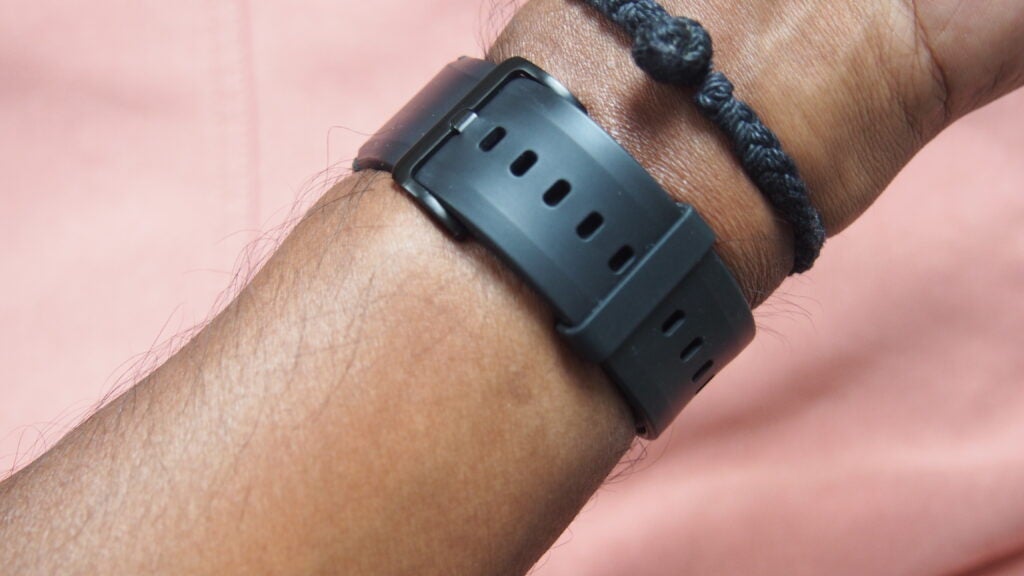The Watch S1 moves Xiaomi closer in its efforts to make a smartwatch you’d actually want to wear. Nevertheless, the company still has some work to do in order for it to be a strong alternative at this price range. For those after a smartwatch that offers a decent hardware and software experience, the Watch S1 does the job. But for faultless fitness tracking and the best smartwatch features you can find at this price, we recommend that you’re better looking elsewhere.
Pros
- Nice screen for the price
- Week-long battery life
- Solid fitness tracking performance
Cons
- Sports tracking features are hit and miss
- Payment support didn’t work
- Companion app still a bit busy
-
1.43-inch AMOLED screen -
Sapphire glass -
Stainless steel frame and two straps -
Works with Android and iOS -
Bluetooth calling -
Amazon Alexa -
NFC payments -
Dual-band multi-system GPS
Introduction
The Xiaomi Watch S1 is Xiaomi’s latest smartwatch. It’s also available in a sportier flavour, in the Watch S1 Active, which isn’t necessarily designed to compete with the likes of the Apple Watch Series 7 or Samsung Galaxy Watch 4.
At £199, it’s up against a strong contingent of models that sit below the big-hitters, aiming to offer attractive design and good mix of software and tracking skills, but with some compromises.
In a clear move to make its smartwatches feel more like smartwatches, the Watch S1’s headline features include Amazon Alexa integration and NFC payments via Mastercard. You also get many of the sports and fitness features seen in the Xiaomi Mi Watch, including one that allows you to improve outdoor tracking.
The question is, does Xiaomi deliver the right mix of design and features with the Watch S1? We take a look.
Design and Screen
- Good-quality AMOLED screen
- Comes with two straps
- Features Sapphire glass and stainless steel
In terms of looks, the Watch S1 feels like a step up from Xiaomi’s first Mi Watches, adding more high-grade materials to make it a more stylish addition to your wrist.
Sporting a round design with a 46mm sized case, it has a stainless steel frame and weighs 52g. It’s waterproof up to 50 metres, too. You get both a leather and fluororubber strap, which means you have the option to smarten up the watch if the need arises. Both straps felt comfortable to wear and, thankfully, proved nice and easy to swap out as well.
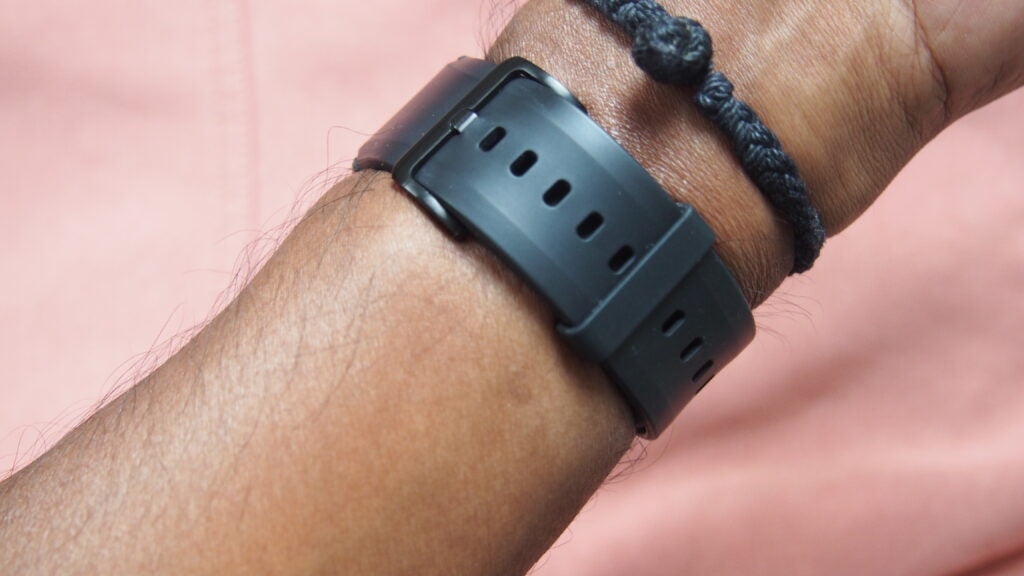
The case holds in place a 1.43-inch AMOLED touchscreen, which offers a 326ppi pixel density; you can set the screen to stay on 24/7. It’s covered with sapphire glass to offer a bit more protection against scratches, which is good to see on a watch at this price.
The quality of smartwatch screens seen on models below the likes of Apple, Samsung and Huawei has come on leaps and bounds over the years, with the one featured on the Watch S1 a good example. It’s a sharp, bright and vibrant screen, which is nicely responsive to touch, offering good visibility indoors and outdoors.
Outside of touchscreen navigation, you get two physical buttons on the right side of the case, with which you can turn on the display and get quicker access to features such as workout tracking. There’s nothing particularly eye-catching about these design elements, but they feel nice to use and are in keeping with the Watch S1’s simple overall look. The buttons in particular had a nice, clear actuation point during testing, rather than the squishy feel you find on most similarly priced wearables.
All in all, the Watch S1 feels like a well-made smartwatch, even though it’s neither exciting nor unique to look at. The option of straps is welcome, as is the watch’s decent screen and build.
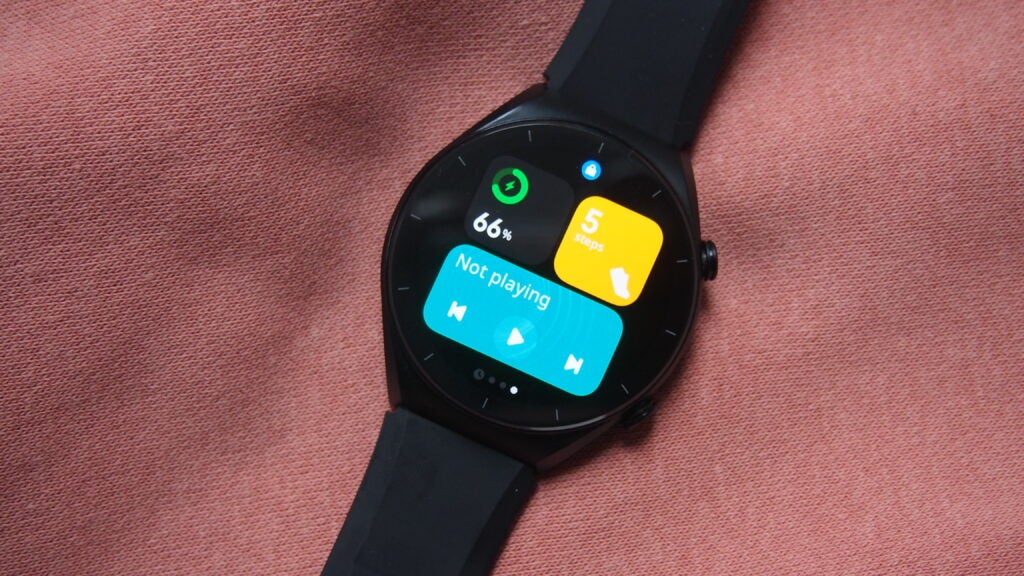
Features and Performance
- Works with Android and iOS
- Amazon Alexa integration
- NFC for contactless payments
Xiaomi has sought to improve the smartwatch features it delivers with the Watch S1 compared to its previous efforts, and while there’s more here, not everything works seamlessly.
The Watch S1 is an option for both Android and iOS users, and I spent my time using it paired up to an Android phone. Set up is via the newly named Mi Fitness app, which has seen Xiaomi clean up its companion app.
Once set up, you’ll find this watch pretty easy to get to grips with. Xiaomi doesn’t reinvent the wheel in terms of the on-watch software experience, and in general it’s a slick performer. Away from the hardware, the app still feels a bit busy for my liking, however. It’s still got a lot of superfluous menus and often times hides important fitness information in unintuitive places, making it hard to get a quick glance view of how your training regime is working.
As a smartwatch, you get a fair amount here; but it’s by no means the complete smartwatch experience.
You can view notifications, but you can’t respond to them. You can handle calls when the watch is still paired to your phone over Bluetooth, and there are music playback controls as well. There doesn’t appear to be a fully fledged app store, but I did find that along with being able to download additional watch faces, there were a small number of native apps available.
Xiaomi also brings integration with Amazon’s Alexa smart assistant, which makes an appearance on watches from Amazfit, Fitbit and Google’s Wear OS devices, too. The surprise addition here, though, is NFC payments, which Xiaomi first included on a version of its Mi Band 6 fitness tracker.
In general, that collection of features works well. While the notification support isn’t the richest you’ll find, notifications were at least easy to read and gave me enough information to know if I needed to respond immediately or could wait. Calls via Bluetooth worked fine and the music controls are well implemented. You get a decent mix of watch faces, too, with the ability to download more from the Mi Fitness app.
In terms of Amazon Alexa support, its implementation is similar to what you’ll see on Amazfit devices and Xiaomi Mi Watch. The voice assistant responded well to queries, and you can also use it to control your smart home kit.
I struggled with NFC payments, however. Powered by Mastercard, and despite having a compatible card to use, the system crashed on me constantly, which meant I couldn’t put the watch’s payment features to good use.
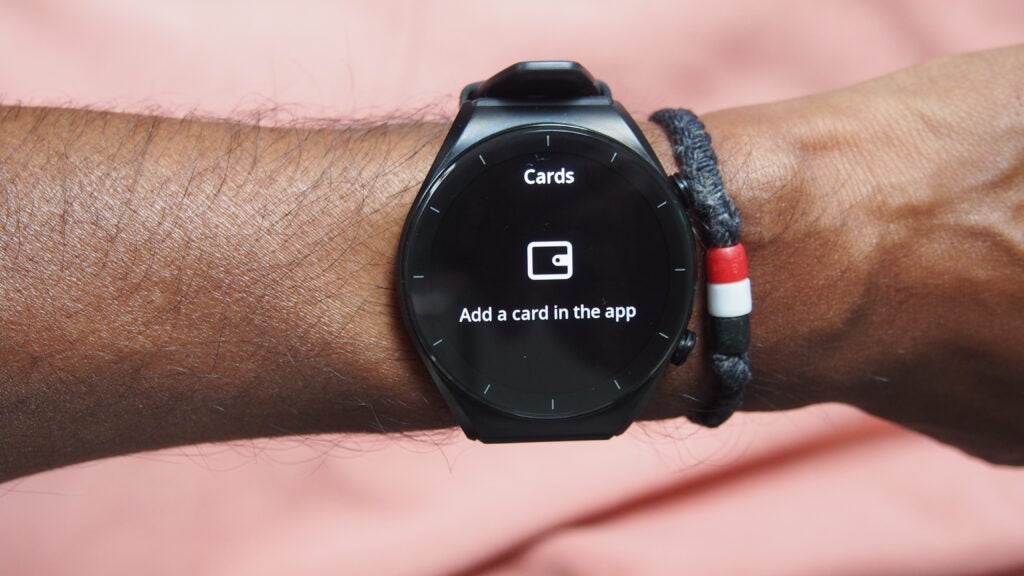
Fitness Tracking
- 117 fitness tracking modes
- Dual-band multi-system GPS
- 5ATM water-resistance
The Xiaomi Watch S1 doesn’t look like it’s fit for exercise until you snap on the additional supplied fluororubber strap. However, it’s a device that can track steps, monitor heart rate 24/7 and it promises to accurately monitor any outdoor workout time, too.
In terms of sensors, you’ll find the usual suspects. There are accelerometer and gyroscope motion sensors to track indoor activity and steps, for example. Then there’s magnetic and air pressure sensors to supply additional environmental data. Xiaomi includes a PPG heart rate sensor, which offers support to measure blood oxygen.
For outdoor tracking, the Watch S1 supports GPS, Glonass, Galileo, BDS and QZSS satellite systems, plus you also get dual-band multi-system GPS. The latter means the watch is capable of grabbing multiple signals from those former systems to in theory deliver more accurate location tracking.
I say “in theory” because, based on my experience, this wasn’t the case. Distance tracking in problematic GPS signalling locations, where the technology is really meant to make a difference, wasn’t quite as accurate as the Garmin watch I tested it against.
However, the bigger issue was that running stats weren’t 100% on the money, either. This included heart rate monitoring, which although performed well in general for exercise, had plenty of inaccurate moments. Note, too, that the Watch S1 doesn’t provide an option to pair up an external heart rate monitor to remedy that.
Of course, tracking runs isn’t the only option here; there are 116 other modes to try out. I found that the Watch S1 fared well with pool swim tracking, with some nice rich metrics on offer. The watch delivered good indoor tracking as well, so while the Watch S1 isn’t the perfect sports watch, it does deliver a decent experience in some areas.
As a fitness tracker and health tracker, there’s plenty here. But since there are no regulatory approved health features, if you want serious health monitoring insights, you’re out of luck
Step counting was in the right ballpark compared to a Garmin and tracking on the Oura Ring 3. In bed, you can use the Watch S1 to capture a breakdown of your sleep stages, and if you turn on advanced sleep monitoring support then you’ll also get additional details around heart rate and blood oxygen data. Those core sleep stats matched up well against the very reliable Oura Ring 3, although the Watch S1 lacks actionable insights to make the most use of that data.
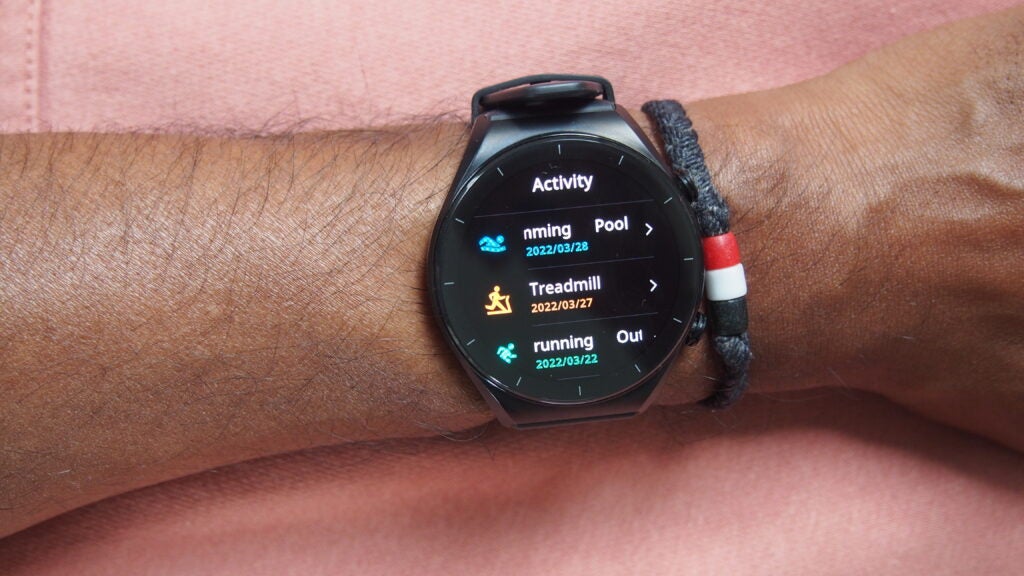
As mentioned, this Xiaomi watch doesn’t offer serious health features. Instead, what it does deliver is some guidance on general wellness, giving you a sense of what might be happening inside your body.
Heart rate monitoring and blood oxygen monitoring (if enabled) are key in this regard, although I found real-time heart rate stats and continuous HR data to be around 10bpm higher than similar tracking with the Oura Ring 3. The Watch S1 fared better with blood oxygen stats, but the lack of context for that data meant the feature didn’t prove hugely useful.
Xiaomi uses the onboard heart rate sensor to deliver stress-tracking features, plotting stressful periods across your day. While its observations of when those stressful periods hit seemed be tally with how my day played out, given the accuracy I experienced with heart rate monitoring, it was hard to wholly trust it.
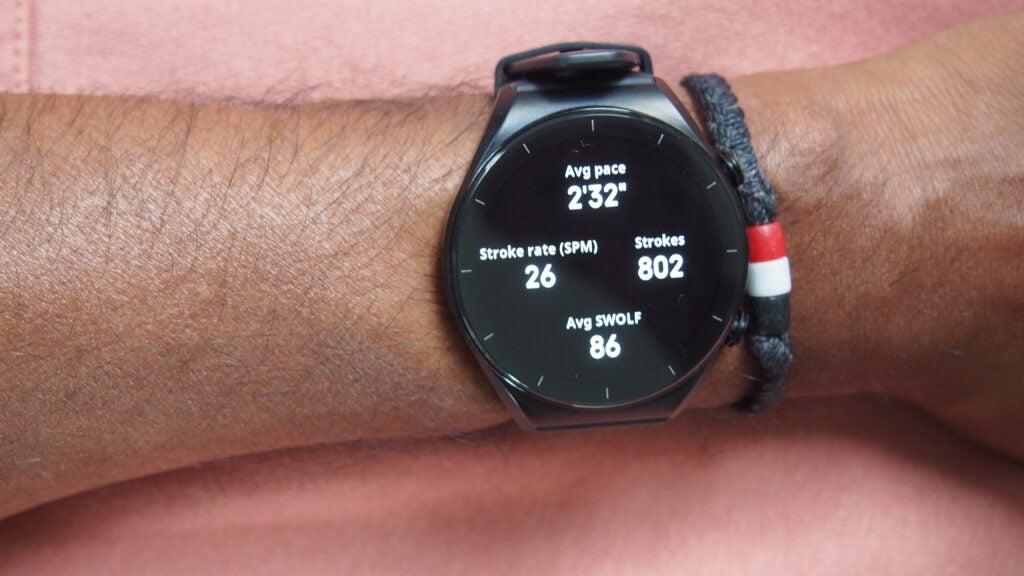
Battery Life
- Good for a week with all features in use
- 12 days in standby mode
- 24 days in Battery Saver mode
The Xiaomi Watch S1 packs a 470mAh capacity battery, which Xiaomi states is capable of delivering up to 12 days in “standard” mode. There’s also a Battery Saver mode, which restricts the features you have access to, but delivers 24 days of battery life.
So, the Watch S1 will see you through nearly two weeks without a charge, but to achieve that you’ll need to do without advanced sleep monitoring, having the screen set to always-on, while also taking it easy with GPS use.
I’d say that based on my experience, with all features in use, the Watch S1 can last for a week. The device doesn’t suffer any daily drop-off in battery life, nor does there appear to be any power-hungry feature responsible for putting a significant dent in the battery. The impact of using GPS is pretty much in line with similarly priced smartwatches from Amazfit, for example.
For charging, the Watch S1’s disc-shaped charging cradle at the rear holds the device in place in a reasonably secure fashion. You do have the option of wireless charging here, too, dropping the watchon a certified wireless charger to power it up without having to scramble around looking for that cable in the box.
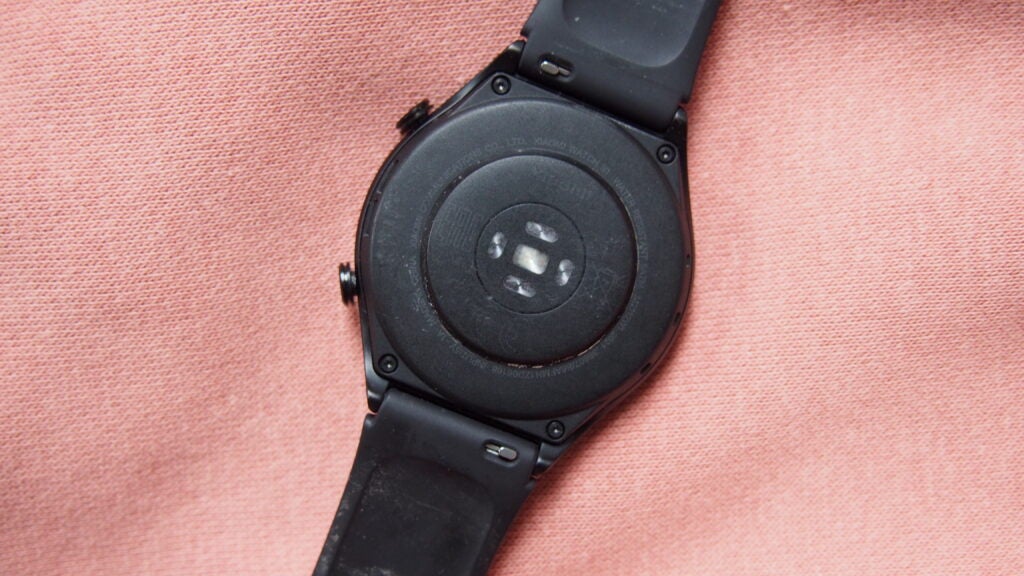
Should you buy it?
If you want a good smartwatch you don’t need to charge every day The Watch S1 offers just about the right mix of smartwatch, fitness features and battery life for it to deliver an overall pleasant experience.
If you want the best smartwatch under £200 While Xiaomi gets a lot of things right with the Watch S1, you could arguably get a more complete experience from Fitbit, Amazfit and Huawei for similar money.
Final Thoughts
During testing we found plenty of positives with the Watch S1 with it featuring good hardware, for the price, and reliable albeit basic fitness tracking and notification support. Where it falls down is with the promise of big sports watch features and smartwatch features that aren’t quite on a level with the competition just yet. I’m sure Xiaomi will get there, but competition at this price is fierce and I’m not sure the Xiaomi Watch S1 does enough to beat rivals.
FAQs
The biggest difference is with the design – the Watch S1 offers a case with stainless steel and sapphire glass, while the Active features a polymer case and weighs less than the Watch S1.
Yes, you can – as long as the watch is paired to your phone over Bluetooth.
Jargon buster
mAh
An abbreviation for milliampere-hour and a way to express the capacity of batteries, especially smaller ones in phones. In most cases the higher the mAh, the longer the battery will last but this isn’t always the case.
NFC
An abbreviation for ‘near field communication’. This technology allows devices to share information by coming into close proximity with one another – the most popular use of this system is in contactless payments.
GPS
An abbreviation of the Global Positioning System, which uses satellite communication to pinpoint your location. Some smartwatches are able to achieve this communication without the use of a smartphone.

